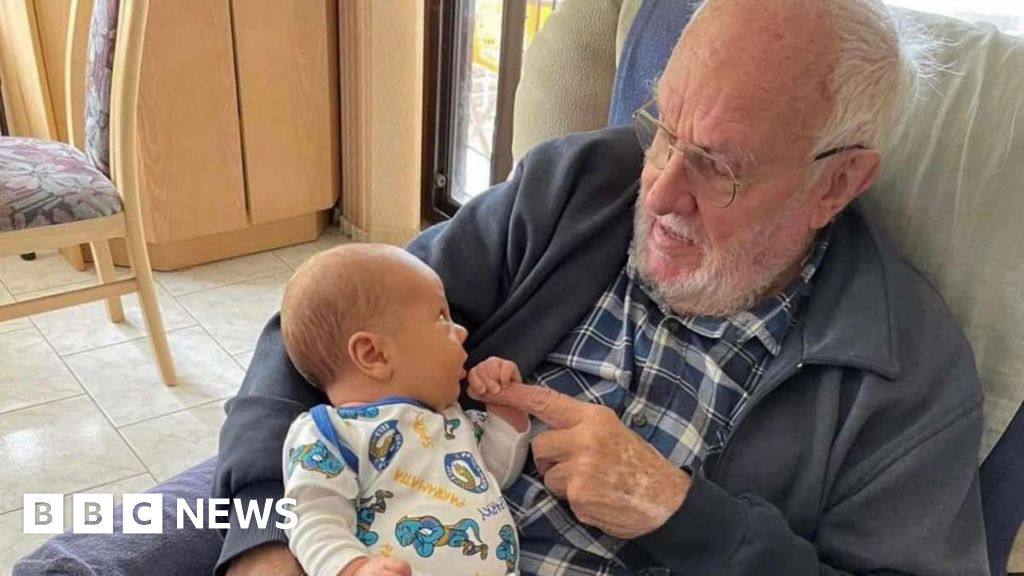Monday, Oct. 13, 2025 | 2 a.m.
Editor’s note: “Behind the News” is the product of Sun staff assisted by the Sun’s AI lab, which includes a variety of tools such as Anthropic’s Claude, Perplexity AI, Google Gemini and ChatGPT.
National Italian-American Heritage Month, celebrated each October, honors the legacy and achievements of Italian immigrants and their descendants, who have profoundly shaped American society across nearly all fields. Established by President George H.W. Bush and Congress through official proclamations in 1989, the monthlong observance coincides with Columbus Day and aims to recognize the cultural and historical impact of Italian-Americans [1][2].
Historical impact and immigration
Millions of Italians immigrated to the United States from the early 19th century through the 20th century, fleeing poverty and violence particularly from Southern Italy and Sicily. Today, Italian-Americans form one of the largest ethnic groups in the country, with over 17 million people of Italian descent contributing to America’s diverse fabric [3].
Contributions to arts and literature
Italian-Americans have left a remarkable imprint on American arts. Great artists such as Michelangelo and Giotto are celebrated around the world, and American communities honor these artistic traditions through festivals and cultural events [2]. The influence of Italian literature is seen in the reverence for writers like Dante Alighieri, whose themes of faith and the human condition resonate deeply with literary scholars and readers [2].
Achievements in science and innovation
The United States has benefited from the scientific genius of Italian-Americans. Enrico Fermi, Nobel Prize-winning physicist, was instrumental in developing nuclear physics and the first atomic bomb [4]. Italian inventors and scientists have enriched advancements in quantum theory, medical research and engineering [4].
Impact on public service, government and military
Italian-Americans have been influential in government and public service. Fiorello La Guardia, a beloved mayor of New York City, brought progressive reforms and civic leadership [2]. Italian-American patriot Philip Mazzei is credited with inspiring the phrase “All men are created equal” in the Declaration of Independence [5].
During wartime, Italian-Americans made up a significant proportion of U.S. armed forces. Among the most celebrated heroes is John Basilone, who received the nation’s top military honors for his valor in World War II.
John Basilone: An American World War II hero
John Basilone (Nov. 4, 1916-Feb. 19, 1945) was a United States Marine Corps gunnery sergeant and one of the most decorated enlisted Marines of World War II. He received the Medal of Honor for his extraordinary heroism during the Battle for Henderson Field at Guadalcanal and was posthumously awarded the Navy Cross for his valor during the Battle of Iwo Jima. Basilone was the only enlisted Marine to receive both of these prestigious decorations in World War II [6].
At Guadalcanal in October 1942, Basilone commanded two machine-gun sections that held off a vastly larger Japanese force attacking the American lines. Despite ammunition running critically low and supply lines cut off, he bravely resupplied his gunners under heavy enemy fire and maintained continuous defensive fire. When ammunition was depleted, he used his pistol and machete to fend off enemy soldiers. His actions greatly contributed to the annihilation of the attacking Japanese forces [7].
After receiving the Medal of Honor, Basilone was sent home for a war bond tour and became a national hero. However, he re-enlisted to return to combat, displaying his deep commitment and patriotism [8]. At Iwo Jima in 1945, Basilone led a daring assault on a fortified Japanese blockhouse, single-handedly destroying it with grenades and demolitions despite heavy fire. Later, he guided a Marine tank safely through a minefield under intense enemy attack. Basilone was killed in action on the first day of the invasion, Feb. 19, 1945.
Basilone’s legacy is honored through numerous memorials, including streets, military facilities and two U.S. Navy destroyers named in his honor. He remains a symbol of courage and sacrifice in the Marine Corps and American military history [10].
Sports and entertainment
Italian-Americans have excelled in sports and entertainment. Joe DiMaggio’s baseball legacy is celebrated as one of the greatest in the sport’s history, with his extraordinary talent, iconic 56-game hitting streak, and multiple championships cementing him as one of baseball’s all-time greats [2][11]. The community has produced celebrated actors, performers and musicians, such as Frank Sinatra, Tony Bennett and Lady Gaga [12].
Family, faith and tradition
At the heart of Italian-American culture are values of family, faith and community, expressed through festivals, religious observances and a devotion to tradition. These values have fostered strong communities in cities around the country and continue to shape the American experience [12].
Culinary influence
Few ethnic groups have changed American cuisine as profoundly as Italians. Italian-American cuisine has a rich history rooted in the massive wave of Italian immigration to the United States between the late 19th and early 20th centuries. Immigrants, mainly from Southern Italy and Sicily, brought their culinary traditions characterized by simplicity, seasonality and strong family food cultures centered on pasta, olive oil, tomatoes, garlic, cheese and cured meats [13].
Traditional dishes evolved into more substantial, richer forms due to better access to meat and dairy in America. Spaghetti and meatballs and chicken Parmesan — staples of Italian-American cuisine — are either unheard of or different in Italy but have become iconic in the U.S. These adaptations reflected practical adjustments and the American palate’s preference for heartier meals [14].
The establishment of Italian restaurants was often a family enterprise initially serving fellow immigrants in ethnically concentrated neighborhoods like New York’s Little Italy, Boston’s North End and Chicago’s Taylor Street. Over time, these eateries spread beyond enclaves into mainstream American dining culture [13]. After World War II, Italian food gained widespread popularity, boosted by returning American soldiers who had developed a taste for Italian cuisine abroad. This shift led to broader acceptance of Italian dishes, including pizza, which exploded in popularity in the 1950s with the rise of chain restaurants like Pizza Hut and Domino’s [15].
Today, Italian dishes like pizza, pasta and gelato are staples in American households, reflecting traditions of hospitality, family and pride [3]. Italian food is deeply woven into American culinary fabric, seen not only in restaurants but in everyday cooking where staples like olive oil, pasta and tomatoes are commonly used [16].
Heritage months in America
Italian-American Heritage Month is one of many heritage months celebrated in the United States that honor diverse cultures and their contributions. Other prominent heritage months include Black History Month (February), Hispanic Heritage Month (Sept. 15-Oct. 15), Asian American and Pacific Islander Heritage Month (May), Native American Heritage Month (November), Jewish American Heritage Month (May), Arab American Heritage Month (April) and LGBTQ+ Pride Month (June) [17]. Each month typically features cultural events, educational programs, storytelling, traditional cuisine, music and other forms of celebration to honor the heritage and contributions of these communities [18].
Italian-American Heritage Month serves as an annual celebration of the enduring legacy, rich culture and wide-ranging contributions that Italian immigrants and their descendants have brought to the United States.
Sources
[1] https://www.osdia.org/commission-for-social-justice/italian-heritage-month/
[2] https://www.presidency.ucsb.edu/documents/proclamation-6045-italian-american-heritage-and-culture-month-1989
[3] https://www.myitalianfamily.com/resources/celebrating-italian-american-heritage-month-rich-tapestry-culture-and-history
[4] https://www.litchfieldcavo.com/recognizing-italian-heritage-month-2/
[5] https://www.congress.gov/101/statute/STATUTE-103/STATUTE-103-Pg773.pdf
[6] https://marineparents.com/marinecorps/john-basilone.asp
[7] https://www.marinecorpstimes.com/news/your-army/2018/06/29/valor-friday-the-legend-of-john-basilone/
[8] https://ussbasilone.org/john-basilone-biography/
[9] https://homeofheroes.com/heroes-stories/world-war-ii/john-basilone/
[10] https://www.usmcu.edu/Research/Marine-Corps-History-Division/People/Medal-of-Honor-Recipients-By-Unit/Sgt-John-Basilone/
[11] https://www.pbs.org/wgbh/americanexperience/features/dimaggio-joe-dimaggio/
[13] https://www.rosoliniusa.com/blog/savor-the-flavors-a-taste-of-italy
[14] https://www.gianniandmacs.com/history-italian-american-cuisine
[15] https://www.locatelli.com/blog/the-origin-of-italian-american-food-favorites-the-surprising-truth/
[16] https://www.eduardosenoteca.com/blog/how-italian-food-became-a-staple-in-america-the-journey-of-a-beloved-cuisine
[17] https://www.shu.edu/diversity-equity-inclusion/heritage-months-and-observances.html
[18] https://assets.ebsco.com/m/684e1f3b8dc808cc/original/MyHeritage-Library-Edition-Heritage-Calendar-2025.pdf
.png)









 English (US) ·
English (US) ·